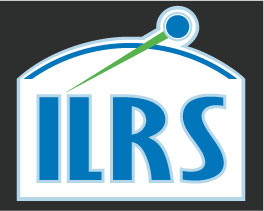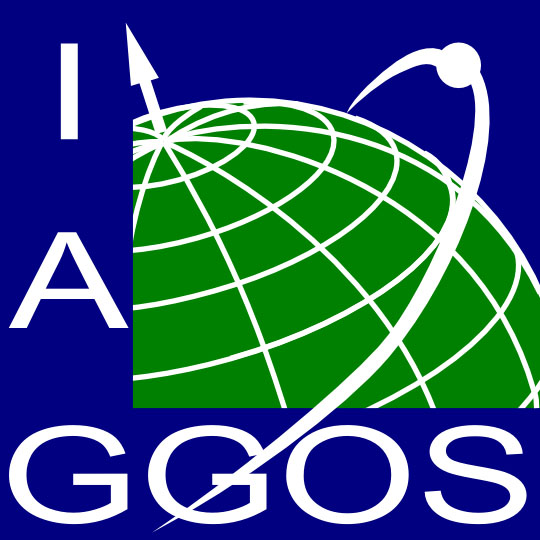ILRS Analysis Standing Committee Charter
SLR Analysis Centers provide geodetic solutions of various types to the International Earth Rotation and Reference Systems Service (IERS) where applicable and/or to the Global Data Centers for use by the scientific community. Solutions provided to the IERS are related to the Terrestrial Reference Frame (TRF) and include station positions and velocities in a geocentric reference frame as well as those components of the Earth Orientation Parameters observable via the SLR technique. Other data products of a more specialized nature include static and time-varying gravity field coefficients, precise satellite orbits, etc.
A major goal of the space geodetic community is to freely use space geodetic data of all types in establishing and maintaining the TRF and in performing other scientific analyses. This is most easily accomplished if the presentation format of the scientific data product is largely independent of the technique. In recent years, the GPS community has adopted the SINEX format, and, since the overwhelming volume of data will flow from the GPS network, it seems appropriate for the SLR and other space geodetic analysis communities to either adopt the SINEX format or to work together toward some other mutually agreeable format. This will ensure that SLR data, with its unique strengths and capabilities, will continue to be attractive to researchers anxious to use all the space geodetic tools at their disposal to achieve their demanding scientific goals.
SLR Analysis Centers provide independent solutions, but have sometimes adopted reference frames and/or models for gravity, plate motion, tides, nonconservative forces, etc. which were either non-standard or poorly defined. These force model differences can produce apparent disparities and inconsistencies between solutions from centers employing different analysis techniques. Inadequate description of the reference frame can also create confusion among outside scientists attempting to use the archived results in their own analyses. It is therefore important that certain standards be uniformly applied to all formal solutions submitted by the Analysis Centers to the IERS and that those force or other models for which no standards have been adopted be clearly stated. It is the function of the Analysis SC to ensure that all IERS standards be adopted in formal SLR submissions to that body, to lobby on behalf of the ILRS to change IERS standards when warranted, to establish and maintain a knowledge base of analysis and data presentation standards which are easily accessible to the SLR Analysis community, to assist the analysis community in adopting and adhering to ILRS standards and practices in a pro-active manner, and to advise the Missions WG when necessary in the evaluation and/or improvement of global SLR network support to existing and future missions.
2. Roles and responsibilities of the Analysis Standing Committee
2.1 Support the SLR Analysis Coordinator
The Analysis Coordinator is a voting member of the IERS Directing Board and chairs the Analysis SC. The Analysis SC supports the Analysis Coordinator in carrying out his IERS duties.
2.2. Provide quality control on IERS submissions
The Analysis SC works in a pro-active fashion to ensure that all SLR Analysis Centers which submit geodetic solutions to the IERS adhere to approved IERS models for gravity field, non-conservative forces, plate motion, atmospheric propagation, relativistic effects, etc, and that those models for which no standards have been adopted are clearly defined. The SC also maintains standards for methods of analysis.
2.3. Ensure data compatibility with other techniques
To the maximum extent possible, the Analysis SC ensures that all SLR Analysis Centers present their science products in a format compatible with, and interchangeable with, that of other space geodetic techniques (e.g. SINEX).
2.4 Provide feedback to the Networks and Engineering WG on station/network performance
Through its analysis of geodetic satellite orbits (and particularly LAGEOS 1 and 2) as determined by the global SLR network, the analysis community is the final arbiter on the data quality from a particular SLR station. The Analysis SC advises the Networks and Engineering WG when a particular SLR station is performing outside minimum or normal specifications or when overall network data quality or quantity is not meeting mission requirements.
2.5 Support the Missions WG in their analyses
The Analysis SC assists the Missions WG in projecting the tracking needs of new satellites and, when necessary, suggests means of readjusting tracking priorities to satisfy the data needs of the full complement of SLR satellites.
2.6 Establish and maintain a knowledge base for the analysis community
The Analysis SC maintains a knowledge database (reports, web sites) which are easily accessible to the global SLR analysis community. Besides the approved models discussed previously, the database would include summaries of publications and reports which describe new forces or models suggested for inclusion in satellite orbit analysis, "optimum" techniques for data reduction and analysis, etc.
- NASA Official: Frank Lemoine
- Web Curator: Lori J. Tyahla
- Contact Us
- Last modified date: Jul 24, 2012
- Privacy Policy & Important Notices




